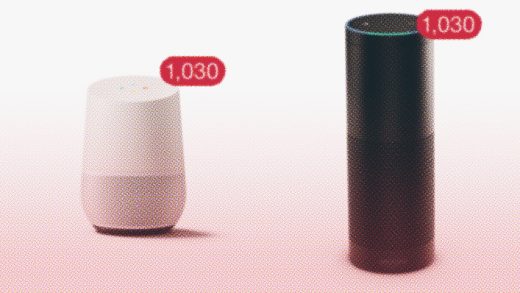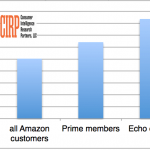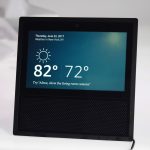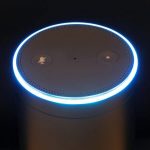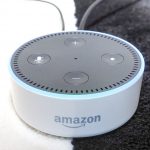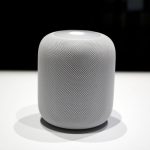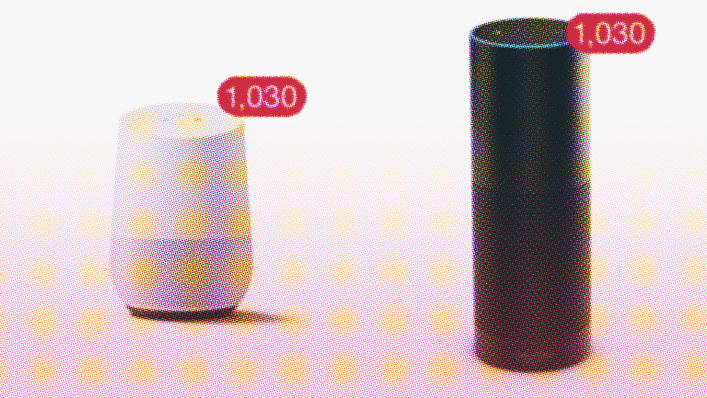On Amazon Echo And Google Home, Notifications Could Be Brilliant’ Or Brutal
Amazon Echo and Google Home would like your attention now. Or at least they will in the near future.
The two tech giants have both recently announced proactive notifications for their connected speakers. Instead of just listening for commands, Echo and Home will soon light up when they have something to say. Users can then ask about what they missed and get notifications read to them by Google Assistant or Amazon Alexa.
If you’ve ever been overwhelmed by notifications on your phone, the idea of yet another device begging for attention probably sounds like a nightmare. But with devices like Home and Echo, Google and Amazon have an opportunity to rethink how notifications ought to work in the first place. This is their chance to reduce distractions instead of creating more of them, and deliver only the information that matters. Let’s hope they don’t squander it.
The Need For Notifications
The desire for proactive notifications on connected speakers is understandable, especially from the perspective of developers making skills for these devices. Huy Nguyen, a software developer at ChefSteps, says notifications would finally allow the company’s Joule sous vide cooker to tell users when the water is heated, when the food is ready, or if there’s a problem with the cooker. Right now, all users can do is walk through recipes and start the cooking process.
“We can’t close the loop on a lot of things,” Nguyen says. “It’s not a full conversation without that.”
ChefSteps should be able to add those alerts later this year, when Amazon opens up notifications to all Alexa skill developers. (In the near term, Amazon is limiting notifications to a handful of services, including AccuWeather, The Washington Post, Just Eat, and Life360.) Nguyen is also pondering other notification-driven features, such as alerting family members via Alexa when dinner is ready, or asking how they’d like their food cooked.
A Time And A Place
But while notifications may be useful on devices like Amazon Echo and Google Home, they introduce new complications that don’t exist on smartphones.
On a phone, for instance, you can scan through a long list of notifications to decide which ones need immediate attention. That same process would be a waste of time on a voice-driven device like the Echo, which could make you spend minutes running through a list of unimportant alerts.
“It would be smart to allow certain types of notifications, or maybe approve notifications, because no one wants a firehose of stuff,” ChefSteps’ Nguyen says.
For now, Amazon and Google have devised crude solutions to this problem: Amazon will require users to opt into notifications for each skill, so they can select just the ones they really want. And Google is starting off with just a handful of high-priority notifications, including flight status, traffic updates, and reminders.
Neither approach will be sustainable in the long run. Google will inevitably want to support a broader range of notifications, and Amazon’s all-or-nothing approach isn’t flexible enough. You might, for instance, want to hear a breaking news update from the Washington Post in the evening, but not in the morning when you’re trying to get out the door. A set of flashing lights just isn’t enough to tell you whether you’re being alerted to something important–like traffic on your morning commute–or something that can wait until later.
To really deal with this issue, Amazon and Google will need to get smarter about how and when to deliver different notifications. That could mean dividing them into categories and withholding certain types of notifications at times, or waiting for a conversation to happen before interjecting with some related information.
Rohit Nadhani, the CEO and cofounder of an email service called Newton, sees the Echo’s Flash Briefing as an opportunity for those kinds of conversations to emerge. If users are already asking about the news and the weather, for instance, it might make sense for a service like Newton to offer a summary of some important emails.
“Amazon has announced publicly that they are going to let you do notifications, and then the natural progression there will let me latch onto their daily summary as well,” he says.
Putting notifications on a stationary device like the Echo or Google Home also presents some major challenges around location and access. If a user has multiple Alexa or Google Assistant devices around the house–or in other places like their car–should a notification appear on all of them? And how should notifications work on a device with multiple user accounts, such as Google Home? Solving these problems will require a lot more intelligence about where users are and what they’re doing, so that developers can determine where to deliver a notification.
“Right now, we don’t have that information, and I think it’s going to be something they’ll have to solve eventually,” Nguyen says.
Less Is More
As Amazon and Google figure out timing and delivery for notifications, they should also set guidelines on content. The goal should not be to duplicate the types of alerts people get on their phones, but to summarize and allow for quick action if necessary.
“I think fundamentally, Alexa or Google Home notifications are going to be much smarter than mobile notifications,” Nadhani says. “On mobile email notifications, you get notified for every email, or every email in a specific account, and I think that’s a bit too intrusive for an assistant like Google Home or Alexa.”
For Newton, Nadhani is envisioning a system that looks through an inbox for important information, and then provides quick summaries or reminders. A device like the Echo, for instance, might provide a nudge if an important client hasn’t responded to your email after a while. And when you’re listening to your daily summary, Newton might chime in with a list of meeting requests or incoming packages.
Both Nadhani and Nguyen acknowledge that it’s early days for the concept of voice-driven notifications. Amazon hasn’t released any extensive documentation for notifications on Alexa, and Google hasn’t revealed any sort of developer program for Home’s proactive features. But as the two companies race to one-up each other in the virtual assistant wars, they’ll need to be careful not to gloss over their underlying challenges. Otherwise, they’ll miss their shot to reduce notification overload.
“I think there are some really hard problems that need to be solved around how to control these things without holding developers down, without slowing us down,” Nguyen says. “I think it’s in their best interest to solve that before they just totally open it to the wild west, because if people turn off notifications right from the get-go, that whole experience is cut off.”
With voice assistants, Amazon and Google have a chance to reinvent notifications and stop the madness we already get from our phones.
Amazon Echo and Google Home would like your attention now. Or at least they will in the near future.
Fast Company , Read Full Story
(77)

